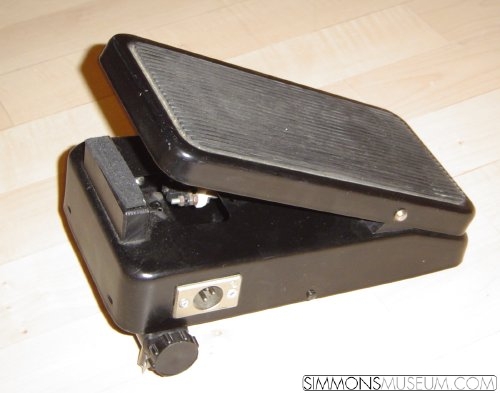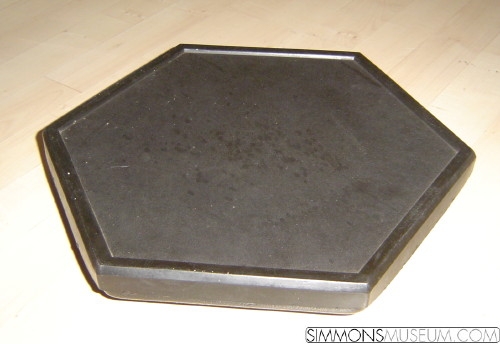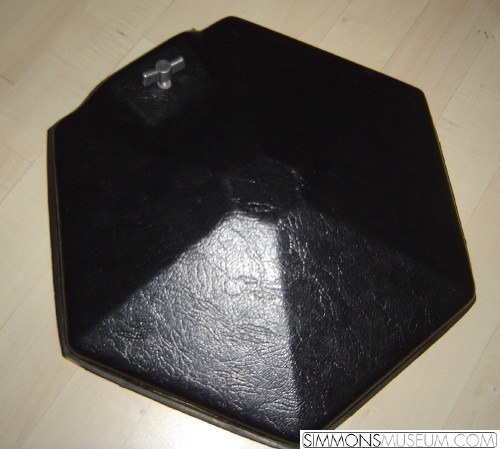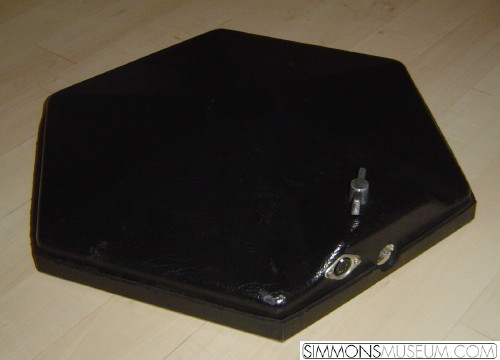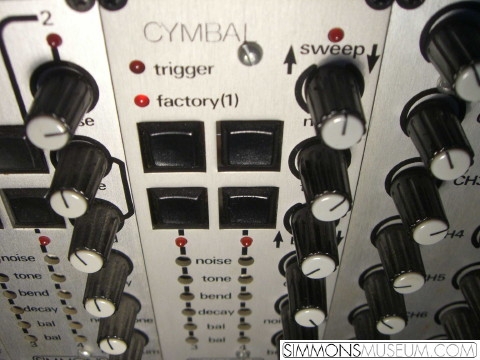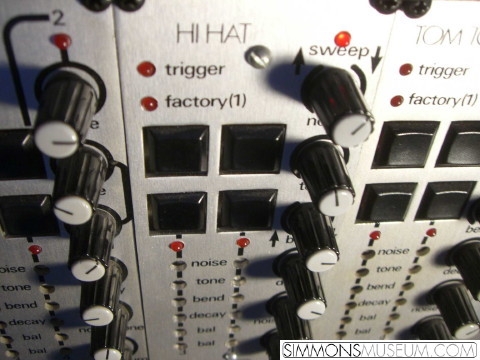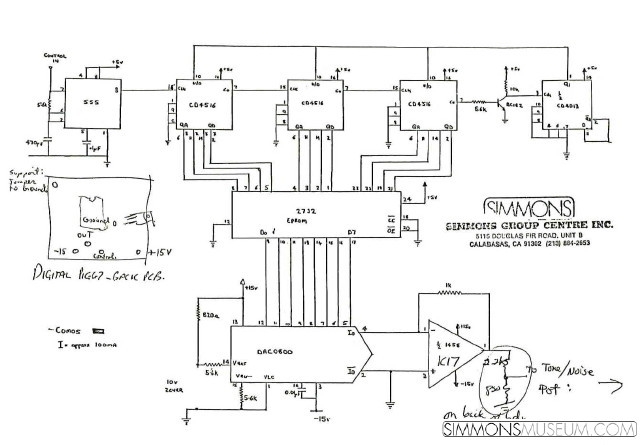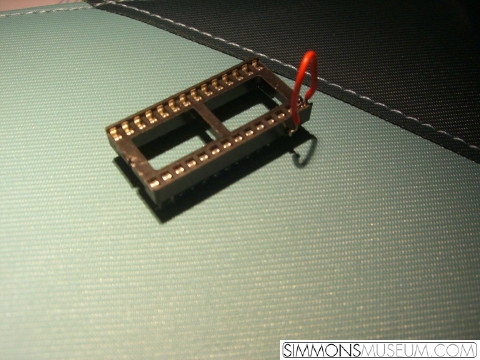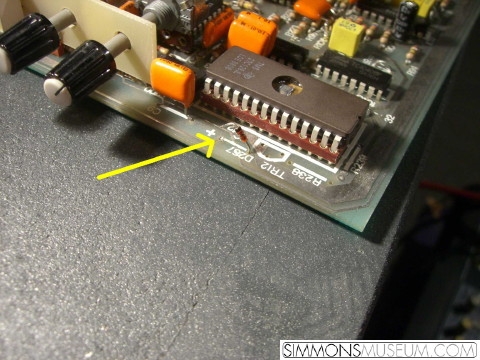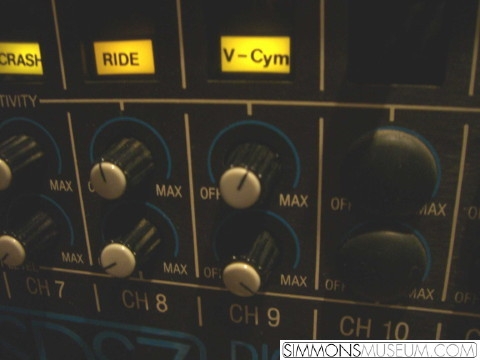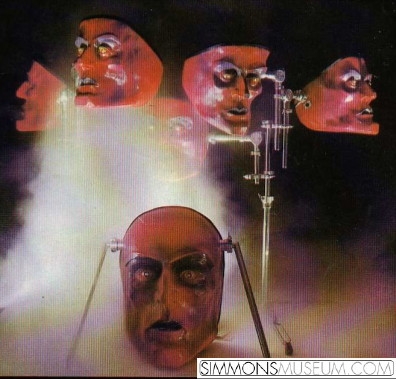Since I deal with electronic drums, I search for the perfect electronic drum set. For sure Simmons never built the perfect drum kit, especially not from today’s point of view. But what is the perfect drum kit? First of all it should be unique and full of character. This at least fits to the look of the SDSV pads, in my opinion the sexiest pads ever designed. Unfortunately the stick impact is absolutely out of the question concerning both noise and playability. And the dynamics cannot keep up with todays high tech pads made by Roland, Hart, Yamaha etc… On the other hand today’s pads look rather boring. They try to imitate real acustic drums what I think is the wrong way. So why not take the best aspects of both worlds and join them into generation of pads which look great and don’t hide that they are electronic but with great playability and dynamics? When I planned this project I already owned enough SDSV pads to built a prototype kit at a reasonable budget. In the meantime I was asked a couple of times to report about this. So here you are:
The ingredients for one drum:

- 10″ tom (foil, not lacquered). The cheapest you can get will do it. Mine cost 29 Euro
- 1 transducer (Ebay: 2 Euro)
- 6 tap boots M5 (DIY store: 2 Euro)
- 10″ Mesh head (double layer: 20 Euro)
- 1 self-adhesive felt pad (those you would use to keep the doorhandle from a wall. DIY store: 2 Euro)
- 1 6.3mm mono jack
- 1 SDSV pad
Tools:
- tuning key
- several screwdrivers
- fine saw
- drill (8mm driller)
- hammer
First I ripped all hardware and foil off the tom:

Than I cutted a 4cm ring from the top and the bottom side (as you can imagine we can convert two pads from only one tom). To estimate the right thickness I layed the drum head and rim onto the drum for line-marking.

Than we can go on dismantling the SDSV pad and place the tap boots, transducer and the jack:

Now it’s time to assemble the pad again:

Then I simply put the ring on the riot shield and fill it with rubber foam. I sticked the felt on the transducer in order to protect it against
direct hits and to dampen the trigger pulses. The transducer does not need to be fixed. This is simply done by the pressure of rubber foam, felt and mesh head

Last but not least I mounted the head and “tuned” the drum. That’s it

And the entire kit:
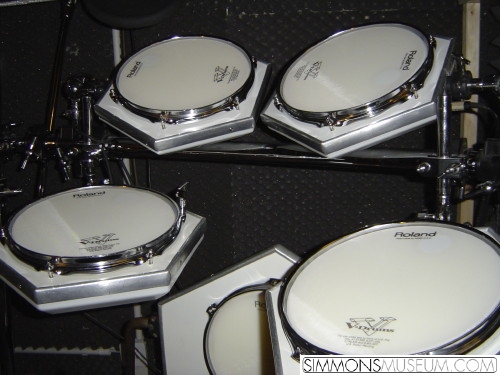
The dynamics are really great although the components did not cost much more than 30 Euro per pad. Of course this project can be realized with any wooden subsurface. So what about converting your desktop into a mesh pad?
And that’s the kit in action:
The sounds are from Toontrack Superior 2. Pretty close to perfect….
